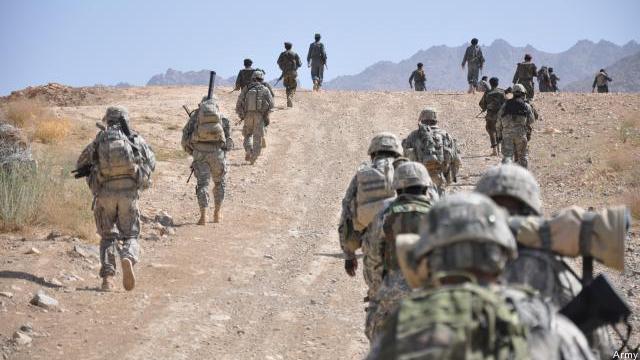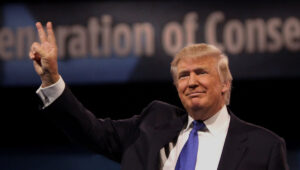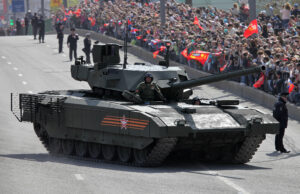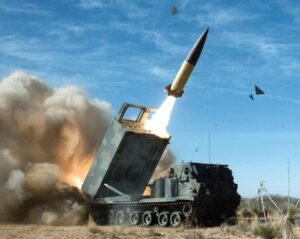2017 Forecast: What Does Trump Want The Army To Do? ISIS, Russia, Or China?
Posted on

WASHINGTON: More than any other service, the Army’s future is uncertain under Trump. On the upside, the President-Elect has promised to boost the Army‘s budget and grow its ranks by almost 15 percent. On the downside, Trump seems deeply skeptical of what has become the service’s driving mission: deterring Russian aggression in Europe.
[We rolled out our crystal balls for our 2017 forecast. Click to read the whole series.]
More than any other service, the Army runs into an apparent contradiction in Trump’s campaign promises. The President-Elect wants to build up the armed forces — by an estimated $93 billion a year above the level set by the Budget Control Act, which he wants to repeal — but he wants to pull back from many of the missions, notably NATO, that the US uses its armed forces for.

Donald Trump
More than any other service, the Army has struggled with the question of what its mission should be. It’s struggled since at least 1991, when after almost a century of worrying about first Germany and then the Soviet Union, there was no great land power threatening America’s interests in Europe. When the Russian threat reappeared, however, it gave the Army new focus.
A transition was already underway. Since December 18, 2011, when the last US troops left Iraq, the Army had labored to reorient itself from infantry-heavy guerrilla warfare to mechanized “hybrid” and high-end warfare against a well-armed foe. Since February 28, 2014, when Russia seized Crimea from Ukraine, that hypothetical high-end adversary is increasingly identified as Russia. Army Chief of Staff Mark Milley has repeatedly called Russia as the No. 1 threat. Army forces have deployed to Eastern Europe to reassure frontline allies like the Baltic States, stockpiled supplies for a major war there, and begun upgunning their forces with equipment — from 30 mm cannons to jammers — specifically and explicitly to counter the Russians.
Great move on delay (by V. Putin) – I always knew he was very smart!
— Donald J. Trump (@realDonaldTrump) December 30, 2016
Enter Trump. He has repeatedly praised Russian president Vladimir Putin: “I always knew he was very smart,” Trump tweeted most recently. That tweet came after Putin decided not to retaliate against Obama’s latest sanctions, which in turn aimed to punish Russian intelligence agencies for their meddling in the 2016 elections — something that Trump publicly doubts ever happened. Trump has also slammed US allies in general, and NATO in particular, for not paying their fair share for the common defense. He even suggested at one point that, despite our treaty obligations, the US would not come to the defense of the Baltic States if they were attacked by Russia. Such a Baltic crisis is the primary mission for which the US Army in Europe is preparing.

Russia’s new T-14 Armata tank on parade in Moscow.
Now, Trump is not reflexively pro-Russian. Indeed, the Kremlin can trigger his intense competitive instincts. When Putin made a public statement about upgrading Russia’s nuclear arsenal, Trump swiftly tweeted “The United States must greatly strengthen and expand its nuclear capability until such time as the world comes to its senses regarding nukes.” He later told MSNBC “Let it be an arms race. We will outmatch them at every pass and outlast them all.”
But even if a nuclear build-up happens, it will benefit the Air Force and the Navy. It will not help the Army. To the contrary, starting with President Eisenhower’s doctrine of “massive retaliation,” a large nuclear arsenal has been offered as an alternative form of deterrence to a large conventional ground force.
So what does Trump want the Army to do? First of all, he wants it to grow. The program he outlined during his campaign would swell the ranks of active-duty soldiers by almost 15 percent, from just over 473,000 today to “about 540,000.” That’s a smaller relative increase than Trump promises for either the Marine Corps (25 percent more infantry battalions) or the Navy (23 percent more ships), but the Army is the biggest service in terms of personnel (if not budget), so every 1 percent increase means almost 5,000 troops. And increasing the Army at all is a huge change from the dramatic cuts since 2011. If you compare Trump’s target of growing to 540,000 with Obama’s targeting of shrinking to 450,000, Trump’s Army is 20 percent bigger.

Army ATACMS missile launch.
Trump has not commented much on the Army’s weapons programs. That’s probably a blessing for the Army, given his public scolding of the Air Force One replacement and the tri-service F-35 fighter. But the President-Elect’s antipathy towards China — which, in stark contrast to Russia, he has called an “enemy” — and his delight in defying expectations both suggest he might favor the unorthodox initiative to upgrade Army ATACMS rockets into land-based anti-ship missiles that could contribute to a naval battle in East Asia. By contrast, the Army’s much larger commitments to conventional ground forces — such as the new Armored Multi-Purpose Vehicle (AMPV); upgrades to existing Strykers, Paladin howitzers, M1 tanks, and M2 Bradleys; and a prospective next-gen light tank and heavy tank — are more suited to European plains or Mideastern deserts than to Pacific islands. Trump has touted the value of arms production as a jobs program, and there are strong congressional constituencies for Army equipment, so an outright cut is unlikely, but the odds for an increase are lower than Trump’s rhetoric would suggest.
In the near term, Trump’s most likely mission for the Army is in the Middle East, where he has promised to “quickly defeat” the Islamic State, preferably in close cooperation with Russia, and suggested he might deploy tens of thousands of soldiers to do it. (Current US ground forces in Iraq and Syria are supporting local allies as advisors, airstrike coordinators, and the like, but not technically in combat). Such a manpower-intensive mission would certainly be consistent with a desire to increase the Army’s size. It is also consistent with how Trump’s prospective secretary of defense, Gen. James Mattis, and national security advisor, Lt. Gen. Mike Flynn, have both focused on the terrorist threat.
Of course, a Middle Eastern land war against extremist irregulars is exactly the kind of mission the Army was glad to get out of in 2011 — but if the President orders them back in, they’ll go.
Subscribe to our newsletter
Promotions, new products and sales. Directly to your inbox.
